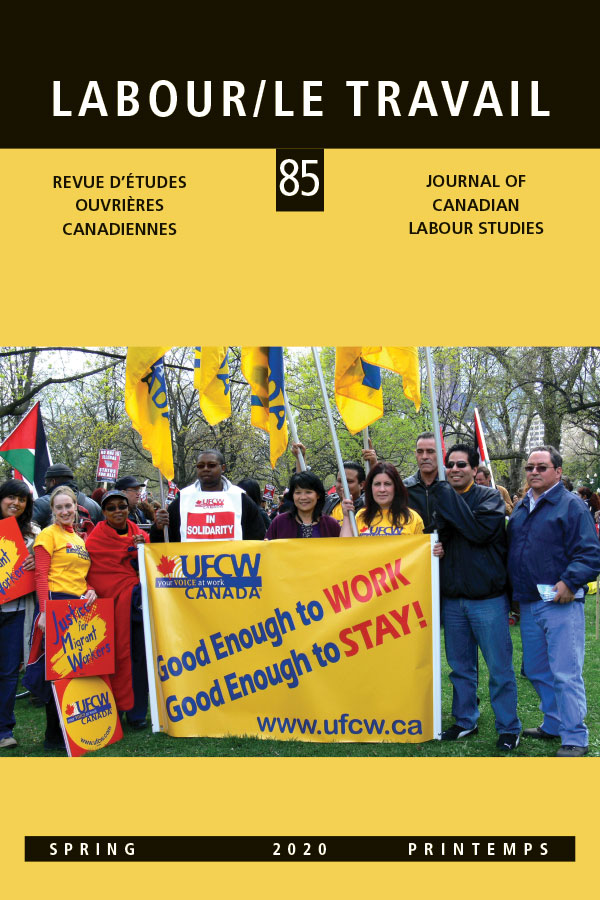Published 2020-07-05
Keywords
- Windsor automobile factory,
- Workers’ Unity,
- New Tendency’s Auto Worker Group,
- trade union
How to Cite
Abstract
This article examines rank-and-file organizing in Windsor’s automobile factories during the 1970s. In particular, I look at the history of two organizations: Workers’ Unity and the New Tendency’s Auto Worker Group. I demonstrate how these groups were part of the North American New Left’s broader turn toward Marxism and the working class that contributed to the emergence of radical rank-and-file movements that challenged both management and bureaucratized trade union leaders. In Windsor, New Left auto workers embraced forms of autonomist Marxist politics concerned primarily with working-class self-activity at the point of production, and these activists formed connections with influential theorists and organizations in Detroit and Italy. Putting these intellectual exchanges into action, the rank-and-file organizations in Windsor used direct action in an attempt to improve working conditions and develop a radical culture of democracy on the shop floor. Although these groups were relatively short lived, their history tells us much about the trajectory of the New Left in Canada and the ways that former student activists grappled with the radical potential of 1970s working-class militancy.
Cet article examine l’organisation de base dans les usines automobiles de Windsor au cours des années 1970. En particulier, je prends en considération l’histoire de deux organisations: Workers’ Unity et le New Tendency’s Auto Worker Group. Je démontre comment ces groupes faisaient partie du virage plus large de la Nouvelle gauche nord-américaine vers le marxisme et la classe ouvrière qui a contribué à l’émergence de mouvements radicaux de base qui ont défié à la fois la direction et les dirigeants syndicaux bureaucratisés. À Windsor, les travailleurs de l’automobile de la Nouvelle Gauche ont adopté des formes de politique marxiste autonomiste principalement préoccupées par l’auto-activité de la classe ouvrière au point de production, et ces activistes ont établi des liens avec des organisations et théoriciens influents à Détroit et en Italie. Pour mettre ces échanges intellectuels en action, les organisations de base de Windsor ont utilisé l’action directe pour tenter d’améliorer les conditions de travail et de développer une culture radicale de la démocratie dans les ateliers. Bien que ces groupes aient été de courte durée, leur histoire nous en dit beaucoup sur la trajectoire de la Nouvelle Gauche au Canada et sur la manière dont les anciens activistes étudiants ont lutté avec le potentiel radical du militantisme ouvrier des années 1970.
